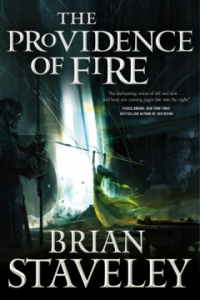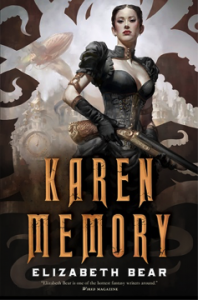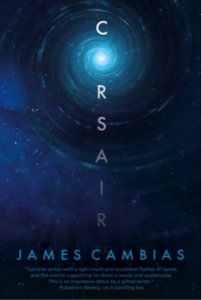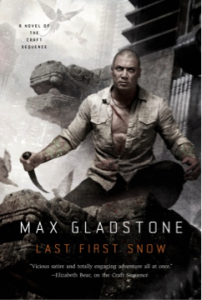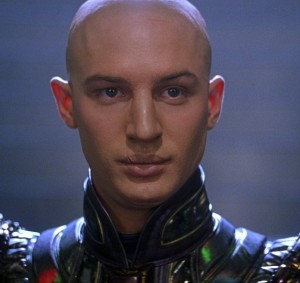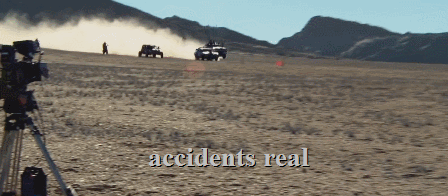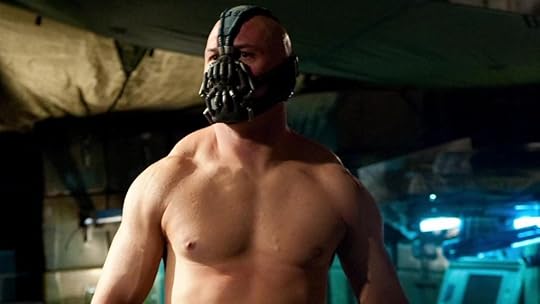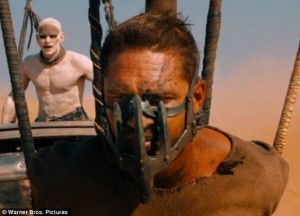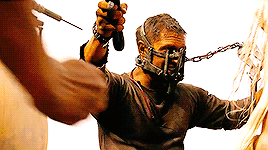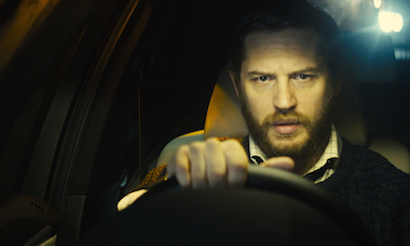Max Gladstone's Blog, page 5
August 5, 2015
A Triumphant Return!
I’m back!
Sorry, everyone, for my absence the last few weeks. I’ve been on the road—throughout the Northeast, and then to GenCon in Indianapolis! It’s been an amazing run, but without the time I’d needed to keep up with blog posting. I’m back now, though, just dealing with an enormous pile of work and email and the like.
Tomorrow evening I’ll be dropping by Reddit’s Fantasy community for an Ask Me Anything Q&A session—visit r/fantasy tomorrow and you’ll see my post at the page. Come! Ask questions! Chat! I’ll be there at 8pm, beverage in hand, to answer.
Some stuff that happened while I was away:
Animator and fan artist par excellence Glinda Chen produced this amazing trailer for Two Serpents Rise! I have no words for how amazingly cool this is. If you like it, be sure to check out her tumblr, which is full of great Craft Sequence fan art.
(Two Serpents Rise from Glinda Chen on Vimeo.)
Seriously, I think I’ve watched this trailer about forty or fifty times by now.
Other video! Google NYC was kind enough to host us Tor Books Summer Road Trip folks for a Talk at Google, which you can see here and now thanks to the marvel of modern technology:
While I was on the road, I stopped by Bryant Park to talk about Hamlet! I had a great time, and Tor.com wrote up the event.
Also relevant: the SFF Readalongs group over on Goodreads is hosting a readalong of Full Fathom Five. If you’re interested, drop by—there’s been some great discussion over the last couple weeks.
Speaking, also, of the last couple weeks—LAST FIRST SNOW has been doing very well. Thanks to all of your support we had a great first two weeks. Brilliant reviews, too! If you haven’t grabbed the book yet, on tour I took to describing it as “a novel about zoning politics and human sacrifice,” which about sums it up.
If you have read the book, and liked it, please do take a minute to write a review at the online bookseller or review board of your personal preference. Some libraries also have review boards the days!
Also! If you’re interested in signed copies, contact Porter Square Books or Pandemonium and they’ll be able to hook you up.
That’s all for this week—I’ll have a more sensible post next week, promise. Peace, y’all!
July 15, 2015
Last First Reviews & Updates
Hi friends! The book launch went really well! We had an amazing crowd at Harvard Book Store last night—and we didn’t even boil anyone for their skin!
Yesterday was pretty wild: four excellent reviews of Last First Snow hit at once, all glowing—and that’s not even counting Seth Dickinson’s Goodreads review, posted earlier (and if you don’t know Seth’s work yet, go forth and preorder a copy of his debut novel The Traitor Baru Cormorant—it’s an awesome book).
From Liz Bourke on Tor.com: “In his Craft sequence, Gladstone is writing a fantasy of modernity, deeply engaged with the issues of our time: the power of capital, the potential tyranny of corporations, the value of the individual, the tension between romanticised pasts and lived-in presents, and the aftermaths of conflict. Last First Snow epitomises his approach. It’s the kind of book that inclines me to use phrases like tour de force.
Max Gladstone just keeps getting better. It doesn’t quite seem fair. If you’re not reading his Craft sequence? Start.
Read Last First Snow. Seriously. Read it.”
From Paul Weimer on SF Signal: “The Craft Sequence novels are ultimately about people and how they strive for change in their world, but the actual plot and themes of the novel, which revolve around the redevelopment project, are a twisting labyrinth of ideas and concepts. We see the consequences of power, the stirring of old ideas and resistance to new ones, and how class distinctions can lead to disproportionate effects of change. All of these come through clearly in the Gladstone’s writing, which is the best in the series so far. It shows multiple sides and viewpoints of the characters and lets readers judge them by their beliefs and actions.”
From Reading Reality: “The Craft Sequence is an urban fantasy series that is guaranteed to leave readers with a terrible book hangover. Each volume immerses you further into this world, and makes it that much more difficult to let go.”
From Rob Bedford at SFFWorld.com: “If Max Gladstone gave readers a story whose strength was the nuanced characters he created and developed, Last First Snow would be a perfectly acceptable novel. If he simply did half of the world-building in the Craft Sequence and featured it as the backdrop for those aforementioned nuanced characters, then Last First Snow would be more than that, an excellent novel. Those elements, combined with the twisty plot and balanced tension make Last First Snow a gem of a novel. If you’ve read previous novels in the Craft Sequence and can’t wait for the next one, then you should be very satisfied with Last First Snow as it features Max’s strengths and provides some added depth to both the world and characters who are familiar. If you haven’t read anything by Max Gladstone, then Last First Snow is a great place to jump into his fictional world and discover a smart, engaging, captivating, and imaginative storyteller.”
Oh, and I wrote a Guest Post for SF Signal, which went live yesterday as well!: “But the public story isn’t always the true one. Memories distort and spin. What seems a grim inevitability twenty years later, at the time, looked anything but. The layers of myth painted over the actual events of the Skittersill Rising tell a story the people who were there, then, would recognize as a distortion. The original protests of the Rising protected their homes, their jobs, their families; religion was involved involved but was not a central issue. Cultures clashed. Negotiations succeeded and failed. People tried, desperately, to hold their lives together.”
I’m sprinting around like the proverbial headless chicken for the next twenty-four hours until the FURY ROAD adventure starts in earnest, but I wanted to check in to wave and thank you all for your support and help and good wishes in this very exciting time. If you read the book and like it, please do drop a review on Goodreads, Amazon, or one of the related sites—and if you don’t have a copy, the hardcover discount’s almost 50% on some e-retailers!
That order of business aside, though—thank you.
Rock on, people. You’re excellent.
July 14, 2015
LAST FIRST SNOW, Out Today!
With apologies to Danny Elfman, Jack Skellington, and Tor Publicity:
My book! My book!
A box of my new book!
It’s out!
Please get it on your Nook.
Or bound!
Use a reader of your choice it doesn’t matter
I hope you will take a look!
My book!
My book! It’s cool!
Protests and backroom deals
My book!
It’s tense—and somewhat real
My book!
The skies are filled with
Feathered lizards flying
Everyone seems on the edge
Or read my book!
I’m going on a tour this week
Harvard Book Store hosts tonight
With Bear Staveley and Cambias
We’ll Fury Road all right!
There are copies on the shelves today
My heart has grown another size
And with your support I feel a joy
Unseemly to describe….
Do you want it, do you want it
I’m so glad that you can has
I can’t wait, I hope you like it,
This strange tale you don’t yet know—
Read my book:
July 8, 2015
Last Week Before LAST FIRST SNOW, so here’s a trailer
Friends and neighbors, I have a book out next Tuesday. Less than a week from today! If you can’t wait, as is my custom, I offer you: the LAST FIRST SNOW book trailer, powered by the cinema of your imagination, in its full surround-sound screenplay format glory.
Last week, a not-so-mysterious package from Tor landed on my doorstep. I believe it contains copies of Last First Snow. I have not opened it yet, for the package itself filled me with deep supernatural dread.
That might be because I’ve been catching up on Nightvale.
But that’s another blog post. I’m out and about at the moment, but I will update with pictures from that box, and whatever I find therein, later this afternoon.
Other news: Fran Wilde, whose book Updraft should really be on your radars, interviewed me about Last First Snow at SF Signal! Check it out!
I will be at Readercon this weekend! If you are there, come say hello!
And on Tuesday July 14, I’ll be launching LAST FIRST SNOW at the Harvard Square Bookstore, as part of an event which will also feature Elizabeth Bear, Brian Staveley, and James Cambias! You want to come buy books for yourself and all your friends! Yessssss, you dooooooo. Staaaaaare into my eyeeeeees.
After that: ROAD TRIP WORLD TOUR FOR VALUES OF WORLD EQUAL TO NEW ENGLAND. I posted about this earlier, but I’ll update my Events page with the proper schedule later this afternoon.
After that, though, I’ll back in New York on the 28th of July to deliver a talk on Hamlet as part of the Word for Word in Bryant Park program! Hamlet is, well, Hamlet, so come watch me embarrass myself trying to say true things about it.
And, after that, I’ll be swinging west to Gen Con for the Gen Con Writer’s Symposium! Here’s my Gen Con schedule. I’m given to understand that events at the Writer’s Symposium run on a ticketing system, so if any of these seems especially awesome to you, and you’re bound to Gen Con, register ASAP!
Thursday Jul 30
9:00 am — The Business of Writing 101
7:00 pm — Craft: Novel Outlines and Synopsis
Friday, Jul 31
11:00 am — Craft: Rewrites and Second Drafts
2:00 am — Craft: Interactive Fiction
Saturday, Aug 1
1:oo pm — Gaming the Novel: How Tabletop Gaming Informs Worldbuilding
3:00 pm — Craft: Magic in the Modern World
Sunday, Aug 2
11:00 am — Read & Critique
Have a good week! Happy waiting!
July 1, 2015
NPR Reviews the Craft Sequence! And I Have a Readercon Schedule!
I, um, wow—so, NPR reviewed the Craft Sequence.
I love seeing the developing mosaic of Gladstone’s world, the hard questions it asks at every turn, the uncertainty of its answers. These are books I long to talk about with people, so faceted and fierce are they, so dangerously aslant our own day-to-day grinds and so full of grace. Sharp, original, passionate — this series is everything I want urban fantasy to be.
I must have a gif around here somewhere for this. Maybe…
I mean, that’s sort of right, but it fails to capture the sort of…
But that’s a bit too, I don’t know, competent and controlled for what I’m feeling now. Though I suppose there’s always the traditional:
Also: time to post some con schedules! I’ll be at Readercon in just over a week (!!) and here’s what I’ll be doing!
Thursday July 10
9:00 PM G If Magic Has Always Been Real. Karen Burnham, Lila Garrott (leader), Max Gladstone, Romie Stott, Walt Williams. Regarding the challenges of “the world we know, but with magic!”, Monique Poirier wrote, “If magic has always been real, why did colonialism and genocide roll the way it did?… It couldn’t possibly be the world we know without all the painful, fucked up history. And what good is magic if it can’t have altered that?” Naomi Novik’s Temeraire books address this by keeping many elements of history familiar but dramatically changing others. In Charlaine Harris’s Southern Vampire Mysteries, paranormal entities have always been there, but they hid from ordinary humans for safety and therefore lacked the ability to influence the course of history. How do other authors of historical fantasy and urban fantasy balance the inherently world-changing nature of magic with the desire to layer it on top of the world we have?
Friday July 11
11:00 AM ENL When Toxic Masculinity Is the Villain. Erik Amundsen, Max Gladstone, Josh Jasper (leader), Daniel José Older. In the “New Visions of Masculinity” panel at Readercon 25, we discussed the characters in Supernatural dying repeatedly because of toxic masculinity. Fighting demons is clearly easier than fighting the cultural narrative of men as arrogant, emotionally repressed aggressors who refuse to accept advice or reconsider poor decisions. What would it look like if a male character became aware of that narrative and decided to take a stand against it? Instead of toxic masculinity traits being used to generate repetitive conflict, how can authors build the tension between what the culture wants a man to be and who he wants himself to be?
12:00 PM F Writing in the Anthropocene: SF and the Challenge of Climate Change. Gwendolyn Clare, Michael J. Daley, Michael J. Deluca (leader), Max Gladstone, Vandana Singh. Science fiction and fantasy have often dealt with fictional apocalyptic scenarios, but what about the real-world scenario unfolding right now? Climate change, or climate disruption, is the most challenging problem faced by humankind, and some have called it a problem of the imagination, as much as economics and environment. In the wake of the latest scientific reports on what is happening and what might be in store for us, we’ll examine how imaginative fiction conveys the reality, the immediacy, and the alternative scenarios of the climate problem.
2:00 PM CL Kaffeeklatsch. Max Gladstone, Charles Oberndorf.
4:00 PM G Dhalgren at 40. Jim Freund, Max Gladstone, Elizabeth Hand (leader), Shira Lipkin, John Stevens. Samuel R. Delany’s Dhalgren was first published in 1975. It is now widely considered a classic, yet there is also the perception that it is a “difficult” book. How much has it influenced other authors and works? Does its dream-city serve as a predecessor for more recent fantastical places such as Ambergris or New Crobuzon? How have its experiments with the form of the narrative inspired more recent works? And how might a reader approach it for the first time from the vantage point of 2015?
5:00 PM F Subverting, Parodying, and Critiquing Cultures from Within and Without. Phenderson Clark, Max Gladstone, Mikki Kendall (leader), Malinda Lo, Walt Williams. On a 2014 Wiscon panel on cross-cultural writing, Daniel José Older noted that representing the rituals of another culture with factual accuracy isn’t sufficient; writers also need to understand what those rituals mean to that culture. In response, Nalo Hopkinson tweeted, “And if u have that knowledge, then is it ok 2 subvert the tradition? Beginning 2 think that may be the core question… not so much who gets 2 appropriate a traditional cultural artifact as who gets to subvert it?” Older responded, “We rarely even get to talk about subversion in this context but it’s a huge part of the story.” This panel will move beyond basic questions about cultural appropriation to discuss the power dynamics and moral nuances of cultural subversion, parody, and critique by insiders and outsiders.
8:00 PM F Revealing the Past, Inspiring the Future. Amal El-Mohtar (leader), Max Gladstone, Alena McNamara, Sarah Pinsker, Julia Rios. When writing Hild, Nicola Griffith was aiming for historical accuracy where possible, including in her depictions of women, queer characters, people of color, and slavery in seventh-century Britain. She writes, “Readers who commit to Hild might see the early middle ages differently now: they see what might have been possible, instead of the old master story about the place of women and the non-existence of POC and QUILTBAG people 1400 years ago. And if it was possible then, what might be possible today and in the future?” What other books and stories expand our notion of the possible by revealing the truth of history? How can creators of future settings learn from the suppressed or hidden past?
Saturday July 12
12:00 PM CO The Animate Universe. Judith Berman, Max Gladstone, Mikki Kendall (leader), James Morrow. In Western post-Enlightenment thought, the universe is seen as inanimate, acted upon by other forces. In some cultures, however, the universe is an actor with agency. What is the role of the universe in our stories, and in the worlds we create to house them? How does an animate universe inform or subvert the author’s and reader’s understanding of meddling gods, dead gods, prophesies, fate, Chosen Ones, and quests?2:00 PM ENV Reading: Max Gladstone. Max Gladstone. Max Gladstone reads The beginning of Last First Snow, my next novel—due out on July 14. Or maybe the first chapter of the book after that, depending on what people are in the mood for.
Sunday July 13
11:00 AM E Autographs. Max Gladstone, John Langan.
1:00 PM G Transformative Works and the Law and You. Max Gladstone, Toni Kelner, Adam Lipkin, Sarah Smith. Let’s discuss the state of transformative works today. Copyright law and case law in this area is changing rapidly, as is the way big publishing treats transformative works. Remix culture is the cutting edge of 21st-century creativity, and we are all postmodernists. Is the law finally catching up with that, or lagging far behind? Will the fate of copyright and transformative works ultimately be decided by the whims of corporations and powerful literary estates?
So: come see!
June 24, 2015
Glengarry Glenn Editor
If you’re a cinema person, or if you’ve ever worked in or near a sales office, you’ve seen the Glengarry Glenn Ross speech. You know the one I mean. This one. (Warning: NSFW / language)
I once worked with a sales team that could recite this speech from memory. One guy told me, voice swollen with pride, that his four-year-old walked into the kitchen while he was pouring coffee one morning, glared at him, and said: “Daddy, coffee is for closers!”
Mamet wrote this speech for the film adaption of GGR—but it proved so popular he grafted it back onto the stage show, even though it’s a pain to stage, since you have to cast a whole actor for one scene. Common reactions on first exposure to the scene include rage, horror, frustration, scorn, all the emotions we read from Baldwin’s audience of broken-down real estate salesmen. But the speech is also, and it took me an embarrassingly long time to realize this, selling something; Baldwin’s character wants to sell these salesmen on being a salesman of a particular sort. He grabs attention with rhetoric, bluster, and status. (“This watch cost more than your car.”) He promises them, implicitly, that good salesmen get rich, that good salesmen get respect, that good salesmen get that greatest (macho) privilege, the right to shout at people and know they have to listen. It’s effective as it is gross. By the end of that scene, every man in that room wants to murder Baldwin—but since that’s not legal, they’ll settle for beating him at his own game. He’s sold them through their anger. They want to win, or at least to defend themselves. Attention. Interest. Decision. Action.
Last night, as the Attorney and I chatted about the differences between legal writing and fiction, I found myself thinking about this scene in a new light. Writers—writers of fiction especially—always have to be closing.
People are busy, and they live in a world filled with art. (I mean, in its loosest sense: any intentional work that captures the mind. Games obviously qualify, as do sports, either the kind you watch or the kind you play. So does the social web—Facebook, Twitter, Snapchat, etc. etc. etc., are all built to make you pay attention.) Writers come to people saying, “read this story!” And the people answer: why? I mean, really, why?
Readers do want to engage with stories—they want to be swept away, they want to be enlightened, they want to forget their lives or have their mind blown, they want to escape either in the flighty sense or the LeGuinian sense of liberation from a prison camp. But readers also want, or need, to (watch the latest episode of $Cool_TV_Show_All_Their_Friends_Watch | finish their essay | go to the gym | cook dinner | pick up the kids | answer email | plan their wedding | do $pressing_chore | play a Batman video game). Time is real estate. No one’s making any more of it. A storyteller has to convince readers that her story is worth the time it takes to hear.
And by “convince,” I mean “sell.”
This is where AIDA comes in—the Attention, Interest, Decision, Action cycle, it seems to me, holds for reader and character alike. We’re used to thinking about character motivation on a beat-by-beat level. Attention: how did the character get to this scene? Interest: why does the character care about these events? Decision: what decision does she make? Action: how does she carry out that decision? So far, so good—we’re solidly in Robert McKee territory.
But the reader goes through a similar cycle. So, when editing or breaking story, seems to me we can ask ourselves a similar list of questions about the reader. Attention: why would a reader pay attention to this? (Possible answers: because the book’s funny; because it scared the crap out of her; because it’s wise; because she wants to puzzle out some tangled prose; because the book offers an escape; because she’s angry; because she’s bemused.) Interest: why would a reader continue? (Will the villain get a comeuppance? Will Our Heroine’s scheme collapse around her? Does the reader see an echo of her own struggle? Are you fulfilling wishes, realizing nightmares, offering a laugh or a shoulder to cry on? Is your writing just that good on a line by line level?) Decision: will the reader keep going? (Yes; no; yes, but the next time you fuck up, she’s gone; yes, ecstatically; yes, but she’ll skim through each scene of endless clunky unrealistic politicical argument; yes, but only so she can rant about the book afterward) And action: the page turn. The closing book. The book, hurled with great force over Niagra Falls. The book, in a blender.
This would be a dangerous way for, e.g., me to think during composition, since my first drafts involve a lot of telling the story to myself, complete with false starts and stops, tics, and coffee breaks. First drafts are that night before a speech, pacing in my hotel room, stammering through the roughest shape of what I mean to say. Composition is about selling myself on the story. (If I worked more to Hollywood spec, I’d do this at the breaking / pitch stage.)
But once composition’s done, and I’m editing a draft—well. Time to sell the reader. Time to be the best kind of scum: fearless and inventive. Time to go through the manuscript and ask, at every turn: am I always closing? What does this line do for me? This word? This exchange?
The great thing about these AIDA questions, to my mind, is that there are many different good answers, especially to the first two. Often story structure advice boils down to “DO THIS OR ELSE YOUR BOOK WILL CATCH ON FIRE AND YOUR READERS DESERT YOU,” with implied scorn for hard writing, quiet scenes, or anything “literary.” (For a good example, see the Screenplay Seminar scene in Adaptation.) But different things interest different readers—hell, different things interest the same reader. I love Ralph Ellison’s Invisible Man, and I love Robin McKinley’s The Hero and the Crown, and I love Ryu Murakami’s Coin Locker Babies, but these are, to put it mildly, different books, deploying a broad range of techniques to hold the reader’s mind. Is the reader interested in your swordfight? In your prose? In your Kantian ruminations? In all of the above? What reason have you given her, in this beat, to turn the page?
Maybe this helps you. Maybe it doesn’t. Either way, I’m interested. I’ll use this angle as I revise the first draft I finished yesterday; you’ll see how it goes.
June 10, 2015
Three Things
Three things about books, sort of:
I recently finished Naomi Novik’s Uprooted. I loved it. I loved it so much that I was kind of clutching it like a security blanket on a first read-through during a mad con weekend, drinking the prose in little sips, and as a result I’m not sure how much I trust myself to have made an accurate appraisal of the book, which is great because the only way to make a more accurate appraisal is to re-read it. Here are some books I hold close to my heart and you should too:
Robin McKinley, especially The Hero and the Crown
Rachel Hartman’s Seraphina and Shadow Scale
The Wizard of Earthsea
If you like those books, read this one.
If you don’t know any of those books, read them. And read this one too.
Actually Robin McKinley’s Sunshine may be the closest point of comparison, even though that’s a lot less of a fairy tale; anyway just, you know, read.
I’m almost done with Hannu Rajaniemi’s Collected Short Fiction. One of the last tales, “Skywalker of Earth,” is tremendous high-octane fun—and one of the few cases of the SF genre reading itself back to itself, in the Warren Ellis tradition, that I can call to mind. What I mean by this: Ellis, in, say, Planetary, responds to and refigures previous works of popular culture, by capturing those works within his own vision so as to attack, confront, or analyze them. Any given issue of Planetary refigures another genre within the Planetary universe—so we find out what HK gangster cinema looks like in the Planetary universe, who Doc Savage is in the Planetary Universe, what’s up with the Fantastic Four etc. etc. SF does this much less, in my opinion. It seems to me that while we engage with the conceptual frameworks of previous stories, we rarely engage with their character archetypes or story structures. When we [SPOILERS for Anathem] reach the multiversal spaceship at the end of Anathem, we don’t expect to meet Corwin coming the other direction.[/SPOILERS] “Skywalker of Earth” hinges on a modern SF protagonist encountering, basically, Doc Smith characters; to win, she has to reinvent SF for a modern age. It’s pretty cool stuff. (Other examples of “reading back” that spring to mind: John Varley’s Steel Beach, which reads Heinlein into itself, and Chip Delany’s Dhalgren, which reads science fictional rhetoric as a whole.) Anyway, if you miss Planetary, find a chance to give “Skywalker of Earth” a read. Unfortunately it’s only in Rajaniemi’s Collected Fiction as far as I know, so that might be a touch difficult if you can’t find a copy. No, you can’t have mine.
So, they’re making a movie of The Martian.
I haven’t read the book yet. I know that amounts to science fiction heresy for a subset of fans at this point, but, hell, what isn’t? I know I have to read it. I will! But for the most part I retain my undeservedly proprietary joy that the guy who wrote Casey and Andy, this goofy, geeky MS Paint-esque webcomic I read back in the day starring two mad scientists, their friend, a quantum police officer, Satan, a pint-sized planet-devouring critter, Grover Cleveland, and King Karl Gustaf (many of those commas should be semicolons probably) is now a mega-bestselling SF author with a movie due out starring Matt Damon.
That’s all I have for you this week, though, sadly. I have books to write.
June 3, 2015
This July: the Tor Books Big Summer Road Trip!
Hello, friends! Excited for Last First Snow? I know I am! And so’s the LA Times, which is pretty cool. The big news today is that I’m gearing up for a tour—and not just any tour, but Tor Books’ Big Summer Road Trip!
This July, Elizabeth Bear, Brian Staveley, James Cambias, and I will gang together on a tour of joint signings and events throughout the American Northeast, something like the Muppet Movie meets Fury Road only with more books and d20s. (The internet has not yet supplied a recut of Fury Road to Movin’ Right Along. BEHOLD MY DISAPPOINTMENT.) We’ll be traveling for two weeks between ReaderCon and GenCon. We have epic fantasy! Steampunk! Near future space piracy technothrillers! Necrothrillers! What more could you want?
Nothing, I say. Nothing at all. Details below!
(Oh, and if you can’t wait, we have a few giveaways of Last First Snow on deck—Tor’s running one, and the Goodreads drawing is still open!)
Tuesday, July 14, 2015 @ 7:00pm
Harvard Book Store – Cambridge, MA
Thursday, July 16, 2015 @ 7:00pm
Pandemonium – Cambridge, MA
Author Pathfinder Game sponsored by Paizo!
Friday, July 17, 2015 @ 6: 00pm
Odyssey Bookshop – South Hadley, MA
Saturday July 18, 2015 @ 1:00pm – 3:00pm
Friends of the Simsbury Library – Simsbury, CT
Sunday, July 19, 2015 @ 1:00pm
Bank Square Books – Mystic, CT
Monday, July 20, 2015 @ 7:00pm
Ferguson Library – Stamford, CT
Wednesday, July 22, 2015 @ 7:00pm
Towne Book Center – Collegeville, PA
Moderated by Chris Urie from Geekadelphia
Friday, July 24, 2015 @ 6:00pm
Northshire Books – Saratoga Springs, NY
Saturday, July 25, 2015 @ 6:00pm
Everyone’s Books – Brattleboro, VT
Sunday, July 26, 2015 @ 2:00pm
Phoenix Books – Burlington, VT
Hosted by Geek Mountain State
I hope to see you there!
May 27, 2015
Mad Max and the Liberation of Tom Hardy
Mad Max: Fury Road hit theaters a week and a half ago! This film is a pretty big deal for Maxkind, and by the most important rubric, that of how Max-ish it is, it performs quite well! “My name is Max,” while it may not be as epochal as Sam Keith’s “I am the Maxx. Answer your phone,” is nevertheless a solid identity claim for the tribe.
The core of the movie is an intense chase scene with powerful feminist moral logic, but I’d like to focus on a smaller-scale, subtle reading of a prominent supporting character: actor Tom Hardy, portrayed struggling with his place in the action cinema universe, and specifically with his role as Batman villain Bane.
To be clear: this is all in good fun, and if you’re taking any piece of this reading seriously, please calm down. It doesn’t reflect my actual views on Hardy, action movies, Batman, or whatever. Still, I haven’t been able to get it out of my head since Saturday night, so I share it with you now!
The film begins with Tom Hardy / Mad Max, who, since a brief violent appearance on the mainstream screen…
has wandered in relative peace through the world of underground (and unshaven) theater.
But no one can hide forever. Tom Hardy’s ambushed and dragged back into the transmillennial action cinema machine…
(Due to a piece of fantastic character work, by the by)
And ends up in a world dominated by plutocrats who peddle artistic solace and comfort to a starved and scared populace, to prop up their own power…
Imprisoned—branded—and used to prop up a caricature wearing an evil mask and riveted-on muscles…
Literally being bled for his strength to support the Warboys. (I’m sorry, I couldn’t find a good screencap for this one.) Trapped behind the mask, Hardy’s chained at the head of a kyriarchical warband out to perpetuate a horrific status quo.
From which he can only free himself by reaching out, however awkwardly, to a community of resistance.
But, of course, he must learn humility and work together with his fellow actors.
Which is hard! For a while he decides to try working alone…
But in the end, he can only achieve true liberation from the character of Bane, and all he represents, by joining an ensemble action picture about armed resistance to the kyriarchy.
At the end of which the Evil Mask is torn away for good—and he’s finally able to enter his character enough to say his name on screen.
There’s a lot of other stuff going on in this film, of course, but I really appreciated the sensitivity and generosity of spirit (for a postapocalyptic road rage thriller) Miller brought to supporting character arcs like Hardy’s!
May 20, 2015
Apres Disney
I saw a mouse teleport last week.
The capstone show of a day at Disneyworld’s Hollywood Studios is a multimedia dance/sfx extravaganza called Fantasmic!, note exclamation mark, presented as a journey into the imagination of Mickey Mouse, sort of like the movie Cell with Jennifer Lopez only featuring fewer segmented cows. They set a lake on fire! The steamboat from Steamboat Willy features prominently! They have lasers! It’s really cool.
The show takes place on a mountain inside Mickey’s imagination (Bald Mountain, possibly? The Magic Mountain?), and during its denoument Mickey stands at the mountain’s peak in full Sorcerer’s Apprentice fashion, calling gouts of water from the lake to fight [bad guys]. Victorious, he claps his hands—and teleports to the mountain’s foot, having undergone a full costume change in the process!
Now, were Mickey Mouse a human stage magician, we’d call this a trick, and try to puzzle out how it was done. What interests me about this moment, though, is that the “trick” is utterly transparent: place one cast member at the top of the mountain in the Mickey suit, and another at the bottom of the mountain in another Mickey suit, and vanish the first as you produce the second, with a burst of fireworks to hide the momentary transition.
But Mickey occupies a weird ontological position, doesn’t he? He doesn’t exist as a physical entity except when embodied by a cast member in contact with an audience—the cast member isn’t Mickey when she’s backstage, for example. (Many characters are portrayed by female actors, apparently.) So, if Mickey exists only when the castmember’s seen by the audience, the trick I described in the last paragraph is not a trick at all! Mickey literally ceases to exist in one place, and begins existing in another.
The mouse actually teleports.
It’s not just the effect of “a different person in the same costume,” either, since the costume is only part of the character. Obviously in a stage show like Fantasmic! the actor’s limited by choreography and blocking—but Disney characters like Mickey also move about the park and interact with people. Castmembers who portray characters obey strict guidelines, limits, and set behaviors in their contact with guests; a human cast member is running a sort of behavioral code that lets the Mouse inhabit them—or lets them inhabit the Mouse. A guest watching Fantasmic! sees no difference between the Mickey in that show and the Mickey who can be encountered wandering around the park. Disney is also very careful to keep Mickey in one place at a time, at least within individual parks—the Mouse may be in Animal Kingdom and the Magic Kingdom at the same time, but won’t be in two places within the Magic Kingdom at the same time. We’re sold the idea that these are entities, which makes the teleporting even more remarkable.
There’s room here for a physics of brand characters, I think; what limits do, and do not, apply to an entity that’s basically a performance? Fodder for future work.
Sorry for leaving you all without a post last week, by the way—I was in such a rush to prepare for our excursion that I forgot even to post a placeholder. Of course, returning from Disney (the way we roll, at any rate) feels something like returning from a close encounter of the eighteen-wheeler kind, so I’m not particularly cogent at the moment either. A few more ideological thumbnails from the trip:
While I was joking about my vacation to Area X on Twitter, I think Disney’s a lot more relevant to discussion of Jeff Vandermeer’s Southern Reach trilogy, and especially Annihilation, than one would think at first glance. In each case we’re discussing a patch of Florida carved off from the rest of the world and transformed by (MILD AND NOT REALLY ACCURATE SPOILERS BASED ON MY MISREADING OF THE TEXT)what amounts to an artist’s vision of a better, or at least substantially altered world, with a skewed relationship to time compared to the wider universe and an obsession with blurring the lines between the human and animal kingdoms(/MANRASBOMMOTT). Most magical place on earth!
Theme Park vacations are exercises in choice constriction; this constriction is the primary way in which they can be said to be relaxing. (They’re certainly not physically relaxing, though walking I’d estimate around 14 miles a day for five days and waking at 6:15 most mornings did ease my perpetual homo computerensis shoulder tension.) In ordinary life, we face theoretically limitless possibility and practically implacable routine. At any moment we could go learn Swedish, jump out an airplane, overturn our desks and go to Washington to fistbump the President, climb the Matterhorn, but we’ll probably do whatever it is we normally do on, say, Wednesday afternoon. At a theme park, there is no ordinary—but your choice space is limited to the immediately accessible rides, restaurants, and attractions. Like video games, then, theme parks reward theming and the construction of interesting choices within those limits.
The American pavilion at Epcot has a cool a capella group!
Roller coasters tell stories—and the best roller coasters, like the best stories, work on the subversion and exploitation of reader expectation. If you’ve ever been on Expedition Everest at the Animal Kingdom you’ll know what I’m talking about; if you haven’t, I’m not sure I want to spoil the ride.
Disney’s playing an ethical game, moral fiction in the John Gardner sense—positive values are imagination, humor, love, generosity, and filial piety (with epicycles to support bucking the will of restrictive but well-intentioned parents, e.g. “bet ya on land they understand / bet they don’t reprimand their daughters“). There doesn’t seem to be much room in the Disney ethical system for erotic attraction, like for people being into other people without that attraction being excused by terms like “true love,” which is fine except it does make me worry a little about Star Wars, which (in the OT) for all Lucas’s “no jiggling in the Empire” silliness is clearly aware about physical attraction as an axis of relationship between its characters. While Han and Leia are clearly in love by the end of ESB, I at least wouldn’t describe their relationship as true love in the old school Disney sense. Though perhaps Disney’s moving away from that—at least, Frozen is a sign for hope in that direction.
In general wandering around the first day of Star Wars weekend I had a profound sense of the common cause, but also of the cultural conflict, between Star Wars and Disney. They’re fellow travelers, for sure, but they differ on key points. I wonder if Disney will catch Star Wars, if Star Wars will come down with a case of Disney, or they’ll retain their mutual distinctiveness? I can see any number of ways this could play out. I’m not sure what’s most likely.







